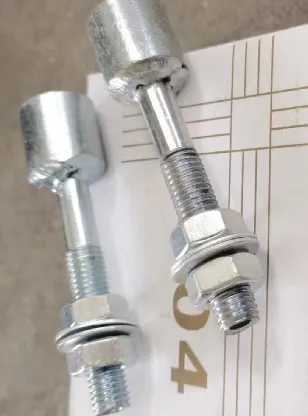loading...
- No. 9, Xingyuan South Street, Dongwaihuan Road, Zaoqiang County, Hengshui, Hebei, China
- admin@zjcomposites.com
- +86 15097380338
- Welcome to visit our website!
Exploring the Advantages and Applications of FRP Profiles in Modern Construction and Design
The Importance and Applications of FRP Profiles
Fiber Reinforced Polymer (FRP) profiles have emerged as a significant innovation in various engineering and construction fields. These composite materials, made of a polymer matrix reinforced with fibers, possess unique characteristics that make them suitable for a wide range of applications. Their lightweight nature, high strength, corrosion resistance, and low thermal conductivity have made FRP profiles increasingly popular in recent years.
Composition and Properties
FRP is constructed from a wide variety of fibers, including glass, carbon, aramid, and natural fibers, combined with different polymer matrices such as epoxy, polyester, or vinyl ester resins. The choice of materials allows for customizable properties suited for specific applications. For instance, glass fiber is commonly used for its cost-effectiveness, while carbon fiber is recognized for its superior strength and stiffness.
One of the most remarkable features of FRP profiles is their excellent resistance to water, chemicals, and UV radiation, which greatly enhances their lifespan compared to traditional materials like steel or concrete. This attribute is particularly valuable in environments prone to corrosion, such as chemical plants and coastal areas.
Advantages of FRP Profiles
The advantages of FRP profiles over conventional materials are manifold. First and foremost is their lightweight nature, which simplifies transportation and installation. This can lead to significant savings in labor and costs associated with heavy lifting equipment. Furthermore, their non-magnetic and non-conductive properties make them ideal for use in electrical and telecommunications industries where interference can be an issue.
Moreover, FRP profiles offer higher durability in adverse weather conditions. They are not susceptible to rust, rot, or decay, which means that structures utilizing FRP materials can endure harsh climates without significant maintenance. This longevity translates into lower life-cycle costs for end-users.
frp profiles

Applications in Various Industries
FRP profiles are utilized across diverse sectors, ranging from construction and infrastructure to automotive and aerospace. In construction, they are commonly used for beams, columns, and reinforcements in structures where weight reduction is crucial. Bridges constructed with FRP elements have demonstrated not only reduced structural weight but also enhanced resilience against environmental factors.
In the automotive industry, manufacturers leverage FRP to produce lightweight components that improve fuel efficiency without compromising safety. Similarly, in aerospace, FRP profiles are integral to constructing wings and fuselage components that require high strength-to-weight ratios.
Another significant application can be found in the civil engineering sector, where FRP reinforcement bars are used in concrete structures. These rebars help mitigate corrosion-related failures, thereby enhancing the durability and safety of infrastructure projects.
Challenges and Future Prospects
Despite their numerous advantages, FRP profiles are not without challenges. The initial cost can be a barrier for some potential users, as the manufacturing process and materials can be more expensive compared to traditional options. Additionally, the recycling of FRP materials remains a developing field, as effective methods for their disposal and repurposing are still being researched.
Looking forward, advancements in technology are expected to further enhance the performance and reduce the costs of FRP profiles. Innovations in manufacturing techniques, such as automated fiber placement and 3D printing, may lead to more efficient production processes, making FRP profiles an even more attractive option for various applications.
In conclusion, FRP profiles represent a versatile and powerful alternative to traditional construction materials. Their unique properties make them ideal for a myriad of applications across multiple industries, indicating a promising future for their continued adoption and development. As industries increasingly prioritize sustainability and durability, FRP profiles are poised to play a crucial role in the evolution of modern engineering and construction practices.
-
Transform Your Spaces with FRP Grating SolutionsNewsNov.04,2024
-
The Versatility and Strength of FRP RodsNewsNov.04,2024
-
The Excellence of Fiberglass Water TanksNewsNov.04,2024
-
The Benefits of FRP Grating for Your ProjectsNewsNov.04,2024
-
Elevate Your Efficiency with FRP Pressure VesselsNewsNov.04,2024
-
Welcome to the World of FRP Pressure VesselsNewsOct.12,2024
-
Unveiling the Future of Filtration: Why FRP Filter Vessels are a Game ChangerNewsOct.12,2024
